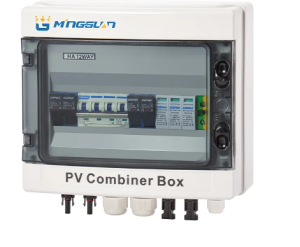To select an appropriate size PV combiner box, it is important to consider other factors such as the number of strings in your photovoltaic (PV) simulator, that is where we check whether one string is running single or more, system voltage and current requirements. PV combiner boxes aggregate several strings of your solar panels, combining their outputs into one single DC input for the inverter. So for instance if you have a solar array of 12-string the combiner box should be of 12-string to not overload it while getting connected.
Amp Rating — PV Combiner Box (combiner or fusible) Combiner boxes, on the other hand, are rated to a certain current level too such as 100A, 150A or even 250 depending on how big your PV system is. Now sum the current from each string to make sure you know what ampacity is required. For example, a 15-string system with each string rated at 9A would necessitate a combiner box that is rated for over 135A; failing to ensure the necessary am matric rating can lead to overheating, loss of efficiency and safety hazards.

PV combiner boxes have to be rated for the voltage of the system (normally between 600V and 1500V for commercial solar applications). Combiner boxes for residential systems tend to be rated only at 600V, whereas commercial installations may require boxes rated for 1000V or even up to 1500V to account for the larger arrays. When correctly selected for the voltage rating, the box will safely handle the electrical load created by the system and prevent events like arcing which can destroy components and affect PV combiner box service life.
A different key factor is environmental shielding especially for put in located to harsh local weather. At a minimum, outdoor PV combiner boxes should be IP65 rated to keep out dust and water. Better boxes include NEMA 4 or NEMA 4X ratings for industrial-strength durability and corrosion resistance, good in coastal areas.
For large installations, similar solar systems can be beneficially separated and grouped into smaller units of PV combiner Box saving space and facilitating easier maintenance while also reducing the risk of toppling over an entire system as individual boxes work independently. In summary, a PV combiner box is properly sized and configured according to the current–voltage requirements and environmental conditions of the individual strings so that energy from multiple sources can be collected safely and efficiently.